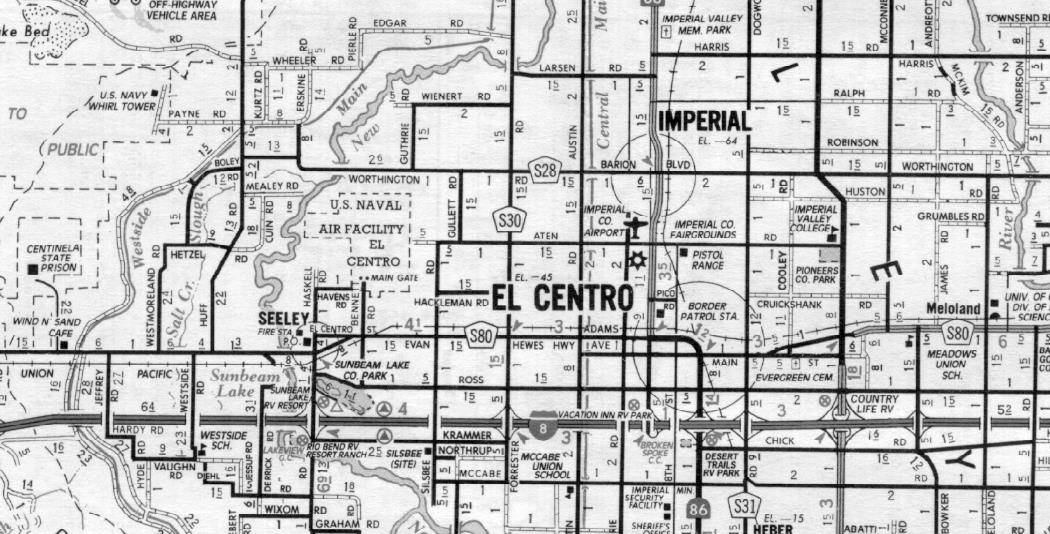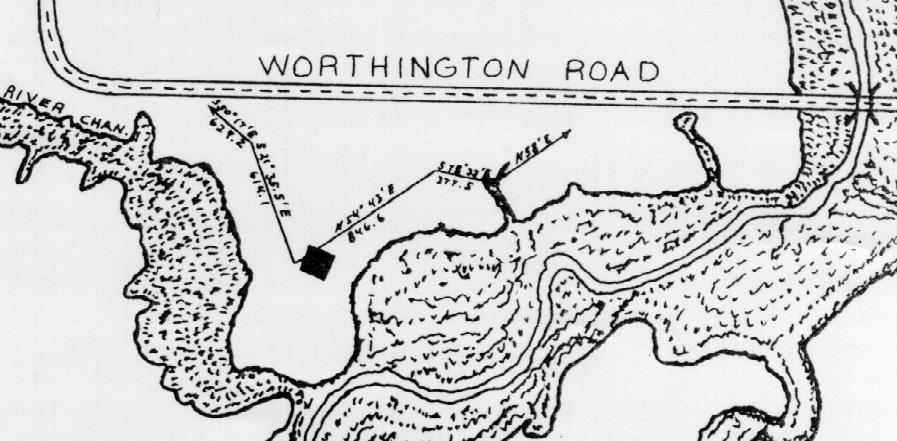Alfrez Pacheco returned just in time with 25 lanceros (lancers). Together with the fort's garrison they counterattacked. Mexican lances, sabers, and a few muzzle loaders faced native arrows, spears, and clubs Three soldados were killed while three others received arrow wounds. 28 Indians died in the battle. With hostile Kamias on the west and Quechan on the east, the situation at the fort was impossible, so they withdrew to San Diego, never to return an the first attempt at non-Indian settlement in the Imperial Valley was all but forgotten.
During the late 1950s a group of archeologists and historians, associated with the present Imperial Valley College Museum, began research on the ruins of the Mexican fort. A recorded Mexican description of the fort reported it as having been 60 feet square with stone or adobe walls, mud ramps and ledges and crowned by a thorny ocotillo barricade, Measurements taken in 1958, however, revealed a structure about 100 feet Square.
Fort Romualdo Pacheco was built in an attempt by the Mexican government to reopen the de Anza trail between the Northern Mexico presidios and those in Alta California by way of the Yuma Crossing at the junction of the Gila and Colorado Rivers. The original opening of this trail has been discussed in the foregoing sections under the de Anza Expedition and the founding of San Francisco. The events that closed this trail for forty years occurred on Tuesday, July 17, 1781. The Yuma Native Americans on the west side of the Colorado River revolted against the settlement of the Spanish at two new locations at Concepcion and San Pablo de Bicuner in December 1780 and January 1781 respectively. The new settlers insulted the Yumas and had much of their best river bottomlands confiscated by the new intruders. On this Tuesday, the Yumas attacked without warning and destroyed the new settlements and killed the priests and many of the villagers and soldiers. At this very time the expedition from Mexico of Fernando Rivera y Moncada, Lieutenant Governor of Baja California, was passing through the Yuma crossing on its way north to found the Presidio of Santa Barbara. The majority of the expedition cleared the area but Moncada and the cattle and some soldiers remained on the east side of the Colorado River. Moncada and his soldiers were killed in the ensuing battles. A party of soldiers from San Gabriel Mission who had arrived to aid Moncada in the original expedition was also killed. In order to verify the news of the Yuma massacre, two soldiers were dispatched from Altar, Mexico to the Colorado, and they were either killed or captured.
Sonora was increasingly common after the war of 1826, which closed Fort Pacheco. Perhaps it was a lack of interest in the land route, as increasing sea contacts were made in the next decades, which led Mexico and California to ignore it for the rest of the Mexican regime. On the other hand, the American interest in the overland routes increased almost steadily in the 1830s and 1840s well before the war of 1846 to 1848 with Mexico.

Fort Romualdo Pacheco site monument is located three miles west of Imperial across the New River on the South Side of S28. U.S. Geological Survey Map.

Detail of the Fort Pacheco location as presented by the Imperial City College Museum, Imperial, California.